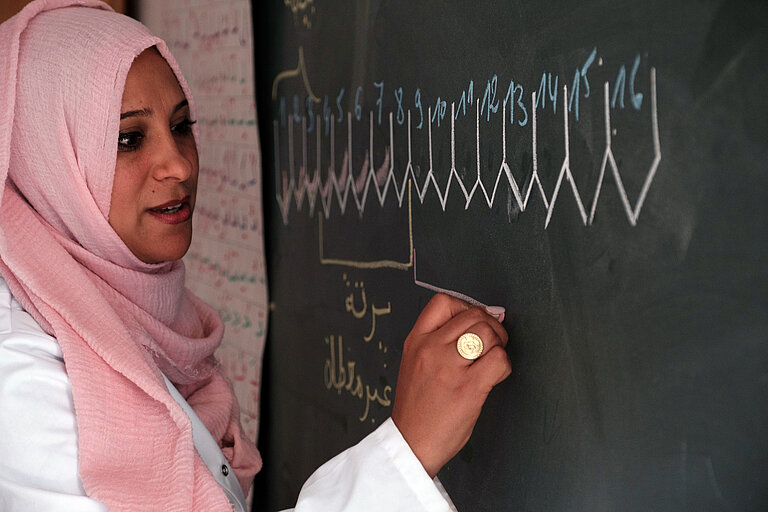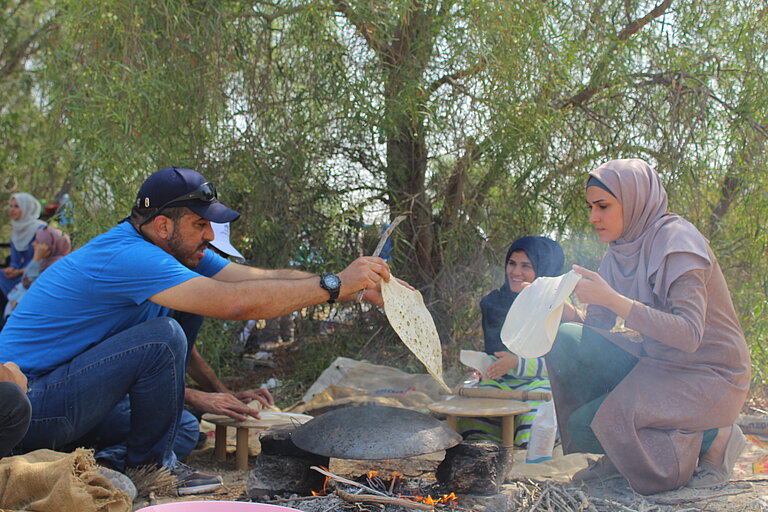Gender in adult learning and education – Toolkit for the MENA region

In August 2020, the DVV International regional offices in the Middle East and North Africa embarked on the elaboration of a toolkit that addresses the topic of gender in adult learning and education (ALE). Four countries were involved: Jordan, Morocco, Palestine and Tunisia. The initiative was meant to take stock of some of the best practices of addressing gender roles in specific fields, such as promoting women in decision-making, promoting participation in learning actions and guaranteeing a safe learning environment. The idea was to provide practical, effective and innovative solutions and tools for ALE stakeholders (policymakers, implementing public agencies, practitioners, civil society, and private educational providers) so that the design and implementation of programmes in ALE are gender-sensitive and inclusive for all members of society.
Why a toolkit for gender in adult learning and education?
This toolkit responds to the challenges of stakeholders who work towards gender equality in and through ALE. It is important to define how ALE and gender are understood, how that understanding underlies the function of this toolkit, and how both emanate from the direct experiences of the stakeholders in all four countries.

In general, the notion of gender refers to the roles and responsibilities of males and females which are created by our families, societies and cultures. This also includes the expectations held about the alleged characteristics, aptitudes and behaviours of men and women. Both gender roles and expectations are socially constructed. This is why they change over time and vary within and between cultures. Other social factors, such as political status, class, ethnicity, physical and mental disability, age and more, modify gender roles. The concept of gender in general is vital not just in Jordan, Morocco, Tunisia and Palestine, but worldwide – especially where women continue to be underrepresented in the labour market and in politics, where women make up the majority of survivors of sexualised violence and domestic violence, or where women suffer from discriminatory laws.
The concept of gender in ALE is especially important in those countries where the majority of participants in ALE programmes are women. Many of them are attracted by the window of opportunity that education and knowledge provided by ALE programmes may open up for them, contributing to living a life perceived by the women as self-determined and fulfilling, thereby defying continuous discrimination based on gender.

Stakeholders who participated in the elaboration of this toolkit firmly believe in the power of ALE for women on a personal level in the short run, and for achieving gender equality in the long run. This does not mean that ALE may not be equally important for men. It also does not mean that men are not part of the gender equation. But because in all four countries ALE seems to appeal to women more than to men, women must be at the core of ALE strategies and practice in order to maximise ALE’s positive contribution to gender equality. Therefore, all stakeholders who participated in the elaboration process of this toolkit are motivated to:
- change the status quo of how gender is used in the context of their projects,
- improve the capacity of partner institutions to use gender strategically, and
- increase the impact of their projects on gender equality.
How was the toolkit elaborated?
DVV International North Africa contracted RESULT – Research Consult, a research-oriented consultancy agency based between Brussels and Frankfurt, specialising in gender and change processes. To make sure that the toolkit included useful and meaningful methods for the stakeholders, a participatory process was set in motion. The process included a round of interviews with the most important stakeholders in each of the four countries. In this process, a background study was conducted which included 46 semi-structured interviews. Interviews were conducted with stakeholders who are mostly state institutions and ALE service providers, as well as donors and other actors active in ALE.
How to use the toolkit
Out of the interviews held with ALE stakeholders in the four countries, module topics were developed that respond to the main challenges at macro, meso and micro level regarding women, gender and ALE. Module one is concerned with questions of how to increase the number of women participating in ALE programmes. Module two is dedicated to practical issues of participation of women in ALE courses. In module three, we tackle the question of how to reach men to participate in ALE offers and how to include issues of gender equality in ALE courses for all participants. Module four looks into the topic of sustainability and sustainable approaches for organisations and ALE participants. And last but not least, module five addresses the question of advocacy.

Every module starts with a short description of the challenges it addresses. The tools that follow are based on these challenges. These tools describe methods, actions, exercises or practices that may inspire stakeholders to address some challenges in the field of women, gender and ALE. They mostly reflect good practices that some (but not all) of the stakeholders in the field of ALE in the four countries follow already. The tools begin with a short overview which provides information about when and with whom the tool can be used. Subsequently, the methods are explained in an easy to follow, step-by-step description, including necessary material and ideas on how to further develop or adapt the respective tools. The tools in this toolkit may be used with a variety of target groups: men, women, families, communities – especially with mixed groups – and at the level of organisations or institutions. It is up to the users of the tools to identify the participants for each of the tools, according to the context, the learner’s needs and the learning objective of the proposed exercise.
Watch video introduction:




